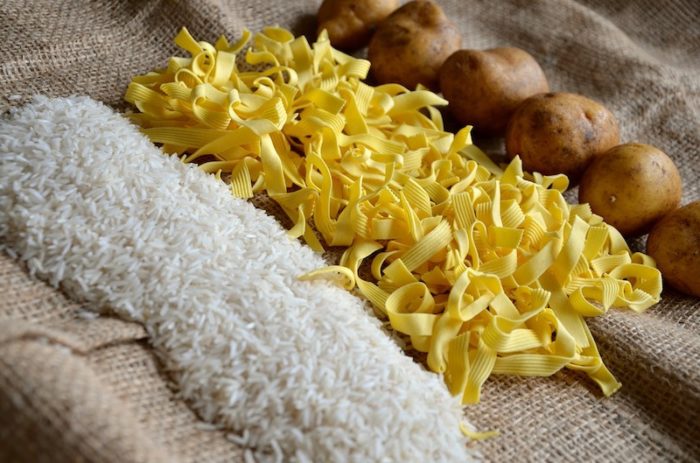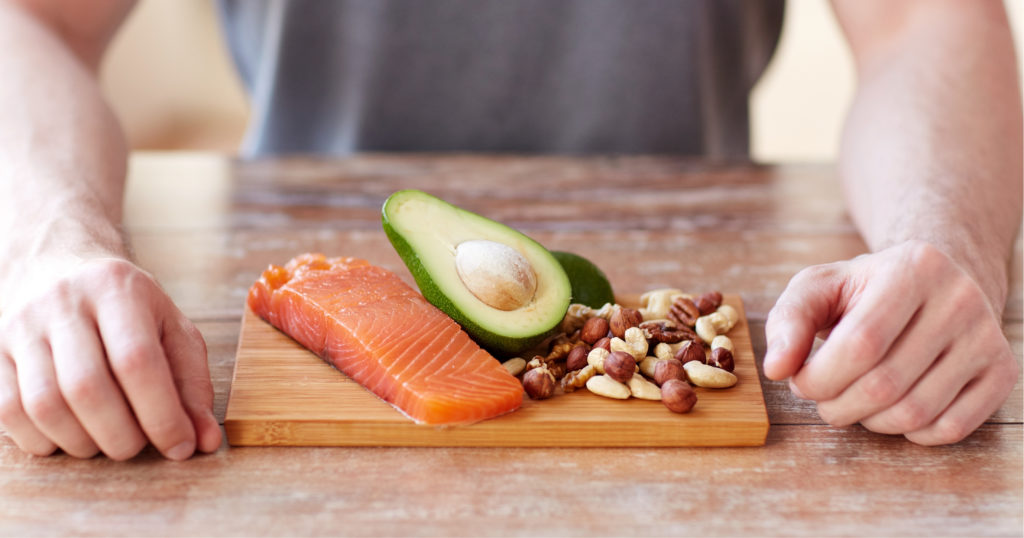In my last article, I wrote about how I’m taking a break from powerlifting to apply my strength to building my physique. My goals are to give my joints a rest and my body time to heal, and to get my pro card by the end of 2020 as a bodybuilder. To do that, I’ll probably need to present a lean 220 or 230 pounds of bodyweight on stage — a big ask, considering that I was planning on competing at 181 for the Kern US Open last month!
However, I have a great team behind me. Mike Tuchscherer of Reactive Training Systems is helping me with programming, and Justin Harris of Troponin Nutrition is covering my diet. We’ll address training a bit later on, but for now, I want to focus on the number-one factor for bodybuilding success: diet.
If you did read the last article, you’ll know that I’m using a carb cycling strategy to gain that much muscular bodyweight. In a nutshell, carb cycling involves manipulating macronutrient levels from day to day according to training load in order to minimize fat gain and maximize insulin sensitivity.

Editor’s note: This article is an op-ed. The views expressed herein and in the video are the author’s and don’t necessarily reflect the views of BarBend. Claims, assertions, opinions, and quotes have been sourced exclusively by the author.
The last article covered my high-carb days extensively, so now it’s time to discuss the low and medium days, where my protein and fat intake are a bit higher, and carb intake is lower. The medium days are isocaloric, meaning I’m eating a maintenance level of calories, and the low days are hypocaloric, meaning I’m consuming a deficit.
Carb cycling involves manipulating macronutrient levels from day to day according to training load in order to minimize fat gain and maximize insulin sensitivity.
Now, while the calorie intake is lower on these days, it’s still pretty darned high. I’m eating more on my off days than I was on the majority of my training days while I was preparing to compete at 181 lbs. That can actually be a little bit tricky, because on medium days, I’m eating a lot, but I’m also training, and the higher fat intake on those days means that I feel fuller for longer than I do after a typical high day meal. To work around this, I carefully plan my meal timing and food choices around my training.
Low days are pretty easy despite being in a caloric deficit, because it’s honestly a nice break from the constant high levels of food intake. That’s a bonus side effect: the main purpose of the low days are to minimize fat gain and keep insulin sensitivity high, and the drop in calories also helps to eat more on training days, when the body is most primed to build muscle.
Food Choices
One of the most fun parts of gaining weight is eating (at least at first, after a long diet), and having the freedom to eat different foods in higher quantities than at other times during your training. That said, to maximize your gaining phase, you still need to eat “clean” — that is, like a typical bodybuilder. It doesn’t all have to be chicken breast and rice, though.
Instead, it’s best to use what I refer to as “calorically dense” foods. These are still unprocessed, high-quality foods, but they tend to be higher in calories in lower in food volume. Let’s take fruit as an example. A medium banana weighs about 118 grams and has about 105 calories. A cup of strawberries weighs more, and yet has half as many calories. They both are packed with nutrients, however, the banana is more calorically dense than the strawberries, and is probably a better choice if you’re trying to gain muscle. The strawberries are better if you’re trying to lose fat.
Calorically Dense Food for Low and Medium-Carb Days
Here are some of my favorite calorically-dense food choices to use on low and medium-carb days:
- Fattier cuts of meat. Let’s face it: boiled chicken breast and extra-lean ground beef can get a little hard to choke down when you’re shooting for upwards of 4,000 calories per day. By incorporating slightly fattier, tastier cuts of meat, I’m able to eat more and get a more calorically-dense protein source, meaning I need to eat less of other foods.
Specifically, I go for top round, whole eggs, and bone-in chicken breast. Yes, these are pretty small distinctions in terms of calories (maybe a few grams of fat per serving), but the increase in flavor is pretty noticeable. Plus, when a whole-roasted chicken is already your cheat meal, getting to eat that on a regular training day isn’t too bad!
- Starchy fruit and vegetables. I love me some veggies, but it’s hard to get big on spinach and brussels sprouts. Starchier vegetables, though, like peas, carrots, corn, and potatoes, have plenty of bang for the buck in both the macro — and micronutrient categories. Same deal for fruits, as I mentioned above.
- Shakes. Solid food often digests more slowly and fills you up more than shakes. There had to be some reason to blend up chicken breast, right?
- Other added dietary fats. I also add in more direct sources of fats, like peanut butter and avocado. Personally, I don’t do great with very high amounts of animal fats, or I’d probably go with grass-fed, fatty beef and salmon here a lot more often. I also don’t enjoy the flavors of most oils, which are a great way to add flavor and fat to high-calorie meals. Peanut butter and avocado agree with my digestion and my pallet, so that’s what I stick with.
One other point to remember: most people will consume more sodium on their medium and low-carb days compared to a higher-carb day. Because protein usually tastes better salted, it’s pretty automatic, whereas on the high-carb days, you’re probably not going to be adding a ton of salt to fruit, bread, and other calorically-dense carb sources.
Now, I know a lot of people are still interested in the specifics, so let’s get into that. Here are my food choices and macro breakdowns for my low and medium-carb days!
Medium-Carb Day Meal Examples
- Breakfast: cream of rice and potatoes with 2 whole eggs, 6 egg whites, and 4 ounces of lean ground beef. Macros come to 70 grams protein, 100 grams carbs, and 14 grams fat.
- Pre-Workout: pancakes, as described in the Full Day of eating. I add some peanut butter as a topping for fats. Sixty grams of protein, 150 grams carbs, 7 grams fat. Meal 2.5 (intra-workout)
- Intra-Workout: Two scoops of Granite Recovery intra-workout for complex carbs (50 grams) and essential amino acids (about 10 grams of protein).
- Post-Workout Meal: Chicken breast or white fish with a mountain of rice and potatoes. Another 60 grams protein and 200 grams of carbs.
- Dinner/Following Training Meal: I hit another post-training meal a few hours later, with the same food choices, but add a quarter of an avocado for 60 protein/150 carbs/7 fat.
- Before Bed: I like something light. I’ve been doing egg whites with oats and peanut butter, for 70/100/14 protein/carbs/fat.

Low-Carb Day Meal Examples
All meals on the low day have the same macros: 70 grams of protein, 75 grams of carbs, and 14 grams of added fats. That’s actually not very “low” carb compared to most diets — nearly 400 grams over the course of the day — but relative to the nearly 1,000 grams of carbs I’ll have some high days, it’s low. That’s the important thing! Remember: all diets, just like all training plans, are individual.
I still try to vary my food choices a bit just to keep myself eating, even though all the macros are the same.
- Breakfast: Half a cup of oats with 2 whole eggs, 6 egg whites, 4 ounces of lean ground beef.
- “Early” Lunch: 8 ounces of grilled chicken breast with half an avocado and some rice.
- Regular Lunch: same as the other one!
- Dinner: salmon with vegetables and roasted potatoes
- Before Bed: I’ll usually have a protein shake with oats and some mixed berries.
One last caveat: remember, this is my diet, and Justin is altering it all the time. As he put it, “Anyone can put a diet together — the hard part is adjusting it as the client grows!” My point? Don’t become complacent. Constantly look for areas where you can make small improvements, because over time, they’ll add up to big gains. And don’t just copy what I’m doing! As always, find what works for you. That’s really the only route to success.
Feature image by Ajan Alen / Shutterstock